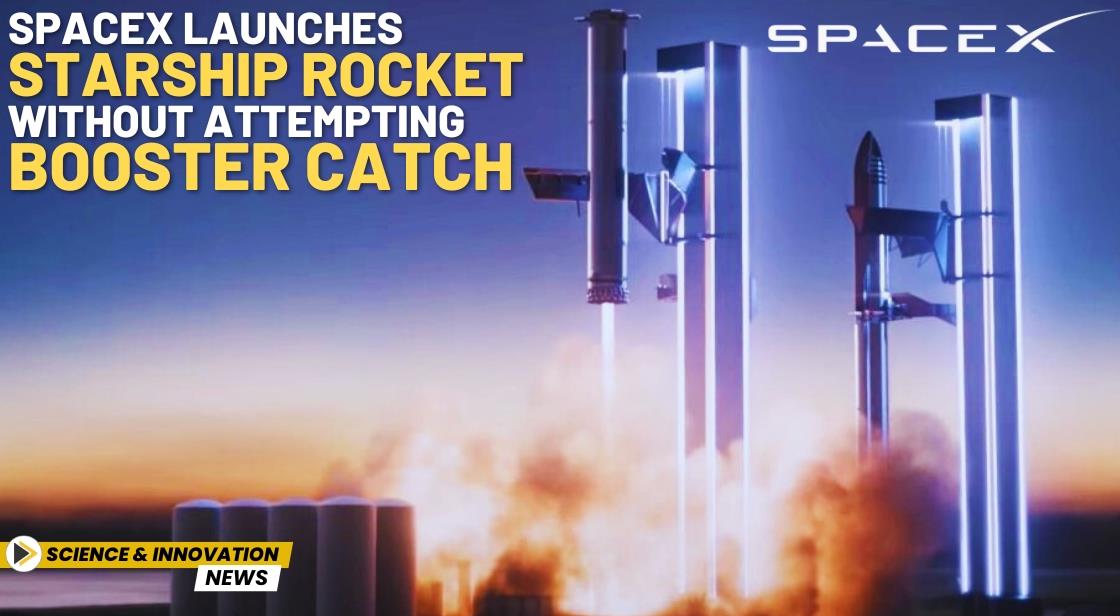SpaceX Launches Starship Rocket Without Attempting Booster Catch

News Synopsis
SpaceX launched its latest Starship rocket on Tuesday, but unlike the previous month’s successful attempt, the booster was directed to splash down in the Gulf of Mexico. The booster catch was called off just four minutes into the flight for unspecified reasons. The booster splashed into the water three minutes later, marking a departure from SpaceX’s ambitious efforts to recover and reuse its massive rockets.
Technical Setback During Booster Catch
SpaceX spokesperson Dan Huot stated that not all criteria for a booster catch were met, prompting the flight director to abort the command to return the booster to the launch site. Although no specific issues were identified, the decision to skip the booster catch highlighted the challenges of perfecting the system for future missions.
Starship Completes a Global Test Flight
Despite the booster’s splashdown, the empty spacecraft atop Starship performed a near-global loop similar to a previous test in October. Launching from Texas, the spacecraft soared across the Gulf of Mexico, skimmed through space, and ultimately targeted the Indian Ocean for a controlled but destructive end to its hour-long mission.
Refinements and New Objectives for the Test Flight
This latest test incorporated refinements to the flight plan and introduced new objectives. Unlike prior launches, Starship blasted off in the late afternoon to ensure daylight halfway around the world for observing the spacecraft’s descent. Engineers also tested the ignition of one spacecraft engine in space, a crucial capability for orbital returns.
Thermal Protection and Catch Mechanism Experiments
Thermal protection experiments were also conducted during the flight. Certain sections of the spacecraft were stripped of heat tiles to assess how future catch mechanisms might function. These changes reflect SpaceX’s commitment to incremental testing and improvement, with even more upgrades planned for upcoming flights.
Long-Term Goals: Recycling Starship for Cost-Effectiveness
SpaceX continues to push towards its ultimate goal of returning and reusing the entire 400-foot Starship. Achieving full-scale recycling could dramatically reduce the cost of transporting cargo and people to the moon and Mars, while also accelerating mission timelines. This strategy mirrors the success SpaceX has seen with its Falcon rockets, which have saved the company significant time and money.
NASA’s Collaboration with SpaceX for Lunar Missions
NASA has invested over $4 billion in SpaceX’s Starship program to land astronauts on the moon as part of back-to-back missions later this decade. Starship’s success is integral to NASA’s Artemis program, and SpaceX’s broader vision of enabling interplanetary colonization.
Challenges and Progress in Starship Development
This was the sixth launch of a fully assembled Starship since 2023. The journey has not been without challenges—three of the first launches ended in explosions. Each test flight provides valuable insights, moving SpaceX closer to its goal of building a fleet of Starships capable of constructing a city on Mars.
A Political Spotlight on the Launch
The launch also drew attention from political figures, with Donald Trump flying in to witness the event. This highlights the growing relationship between SpaceX’s founder Elon Musk and the president-elect, underlining the strategic significance of the program.
A Vision Beyond Earth
SpaceX envisions a future where Starship will be the workhorse for interplanetary travel, enabling human exploration of the moon and Mars. With NASA’s support and SpaceX’s innovative approach to recycling and reusability, the Starship program is paving the way for a new era in space exploration.
You May Like









